Nepal’s prime minister KP Sharma Oli has resigned after at least 19 people were killed in clashes between the country’s security forces and anti-corruption protesters.
In a statement, Mr Oli said he was standing down in light of the crisis engulfing Kathmandu, where anti-corruption demonstrators defied an indefinite curfew and clashed with police on Monday during violent protests triggered by a social media ban.
Earlier on Tuesday, Mr Oli withdrew the social media ban and called an all-party meeting, saying “we have to resort to peaceful dialogue to find solutions to any problem”.
But anger against the government showed no signs of abating, as protesters stormed the parliament complex in the capital and set fire to senior politicians’ residences, with videos from Kathmandu showing huge plumes of dark smoke billowing out of some of its most recognisable landmarks.
One eye-witness told The Independent he saw protesters setting fire to the homes of politicians, and that ministers were being taken to safety by military helicopters.
Mr Oli’s private home in Balkot, Bhaktapur, to the east of Kathmandu, was also set ablaze as the anti-government protests spread beyond the city centre.
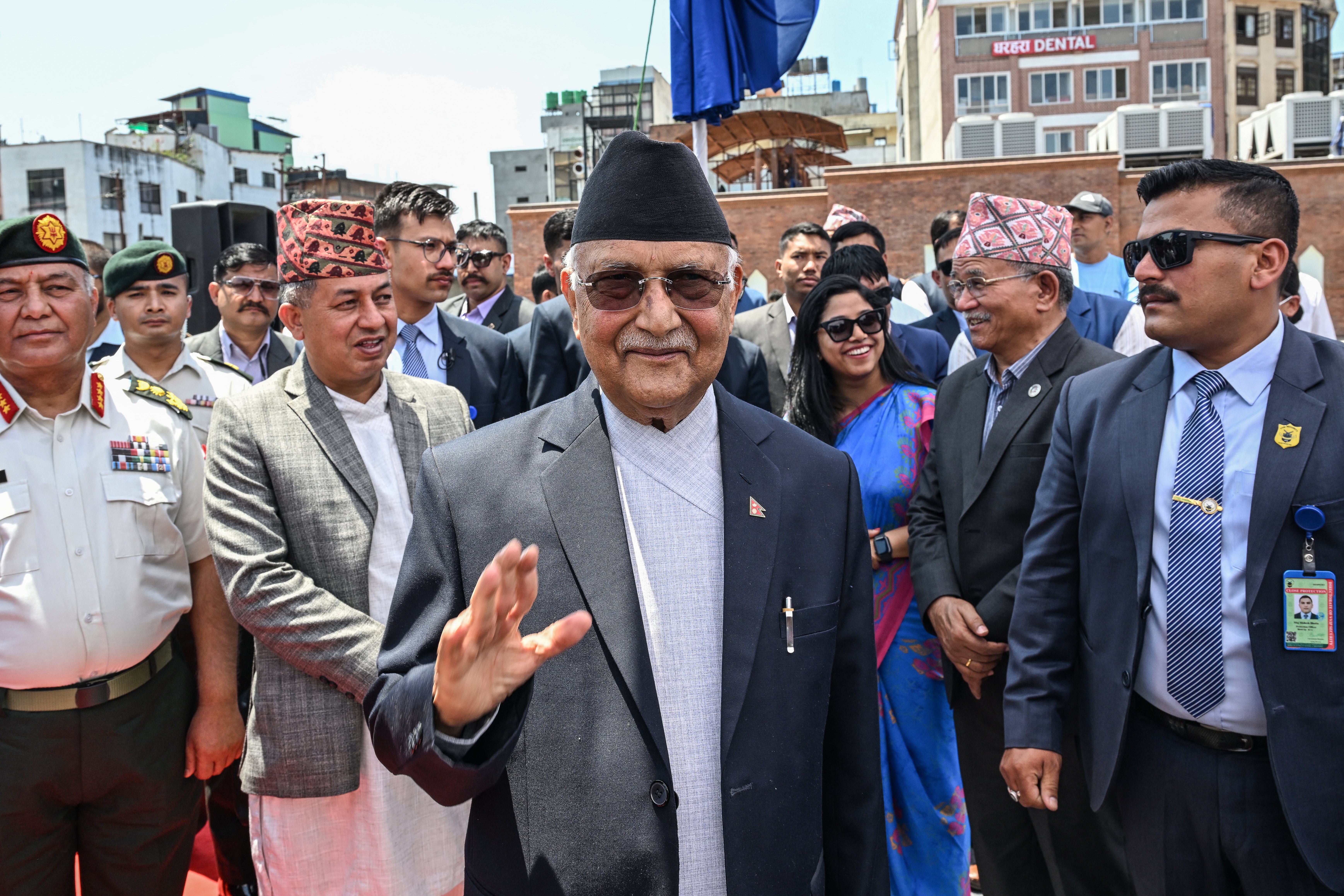
Authorities said demonstrators marched to Mr Oli’s compound at dawn and attempted to break through security barriers. Police tried to hold them back, but protesters refused to disperse and eventually set fire to the property, reported the Kathmandu Post. The residence contains two houses, both of which were engulfed in flames during the attack.
Protesters also set fire to tyres on some roads, threw stones at police personnel in riot gear, and chased them through narrow streets.
Hundreds of people from towns located near the India-Nepal border had started marching towards Kathmandu to support the protesters, one demonstrator told Reuters.
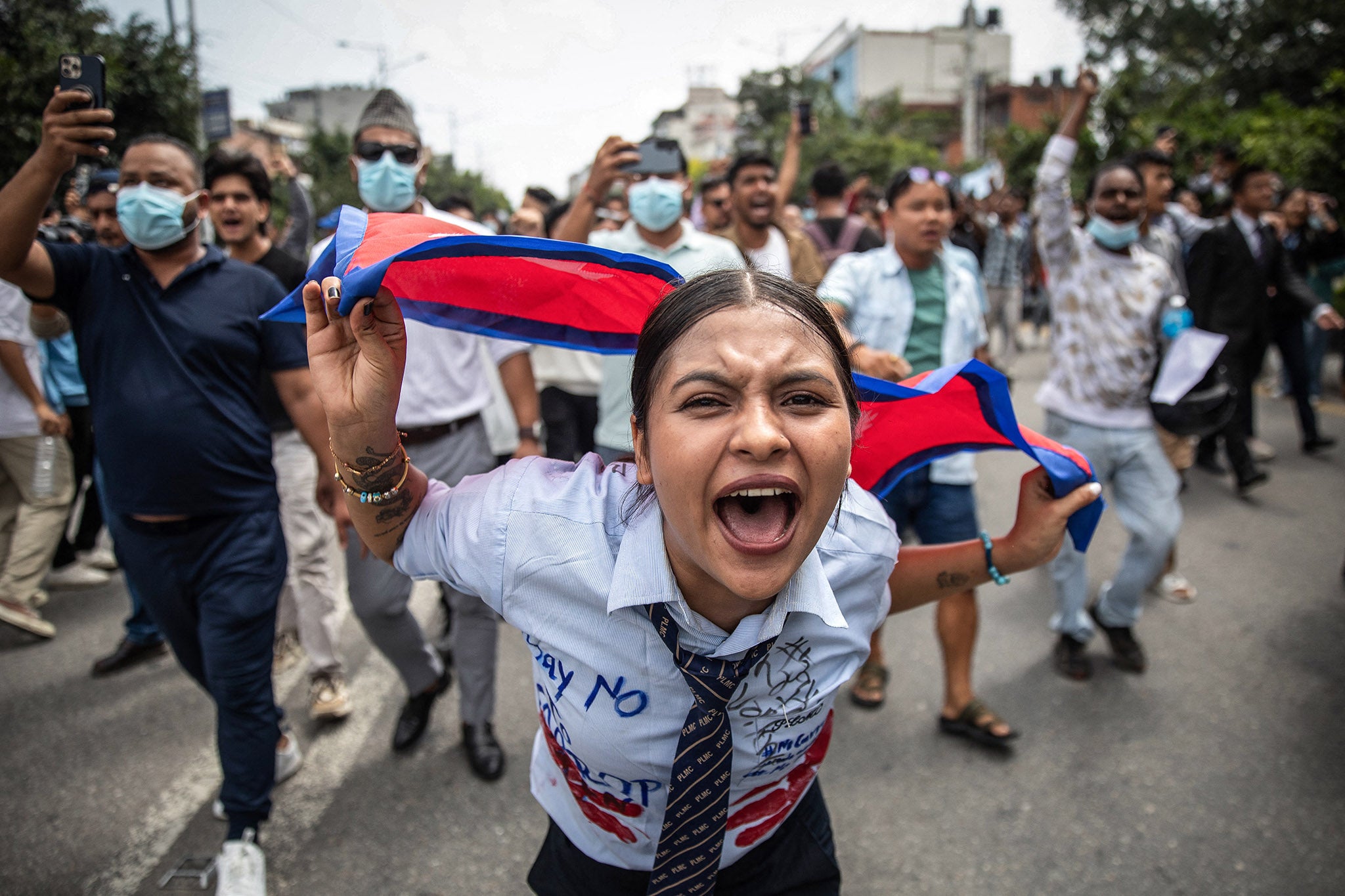
Smoke from the protests was seen drifting across the runway at Tribhuvan International airport, the capital’s main airport, which is located close to the city centre.
Flights in the morning were cancelled, and on Tuesday afternoon the civil aviation authority announced the complete closure of the airport with immediate effect.
The protests began with Gen-Z outrage at nepotism and corruption in the public sector, which spawned a number of popular online movements that spread via social media. While the government claimed it had banned platforms for missing a registration deadline, the move was widely seen as an effort to crack down on anti-nepotism memes.
What began as opposition to the ban quickly expanded into a broader revolt against political leaders accused of corruption and misrule. Tens of thousands took to the streets of the capital, chanting: “Stop the ban on social media” and “Stop corruption, not social media” while waving national flags.
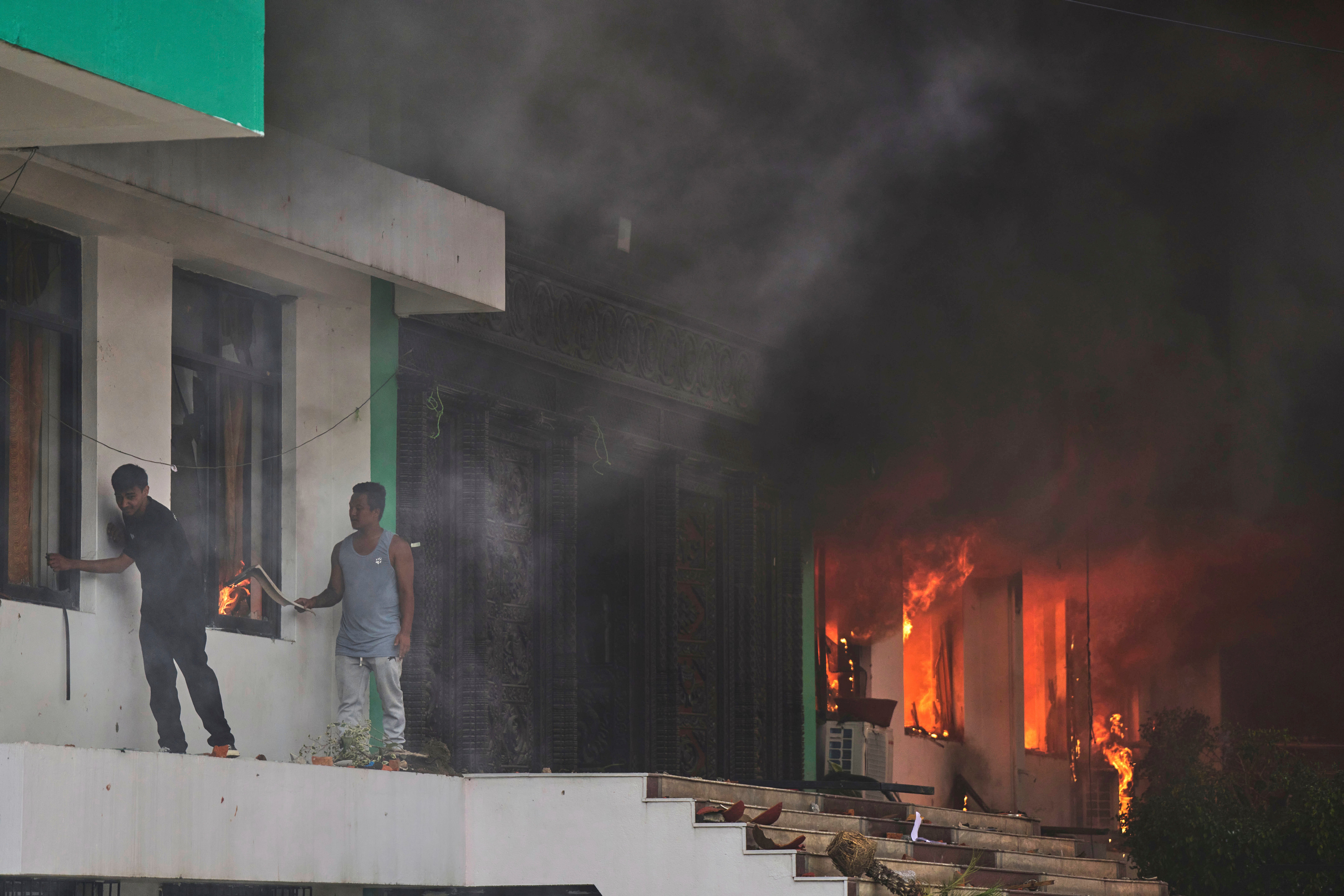
“Unemployment here in Nepal is sky high and you can see all the youths leave the country in high numbers,” Sudeep Bista, a 62-year-old pilot from Nepal, told The Independent.
“This outburst was an accumulation of frustration and anger over a decade now due to mismanagement and massive corruption,” he said, observing that “merit meant nothing and all high positions [were] awarded to political cadres”, referring to party workers and their family members.
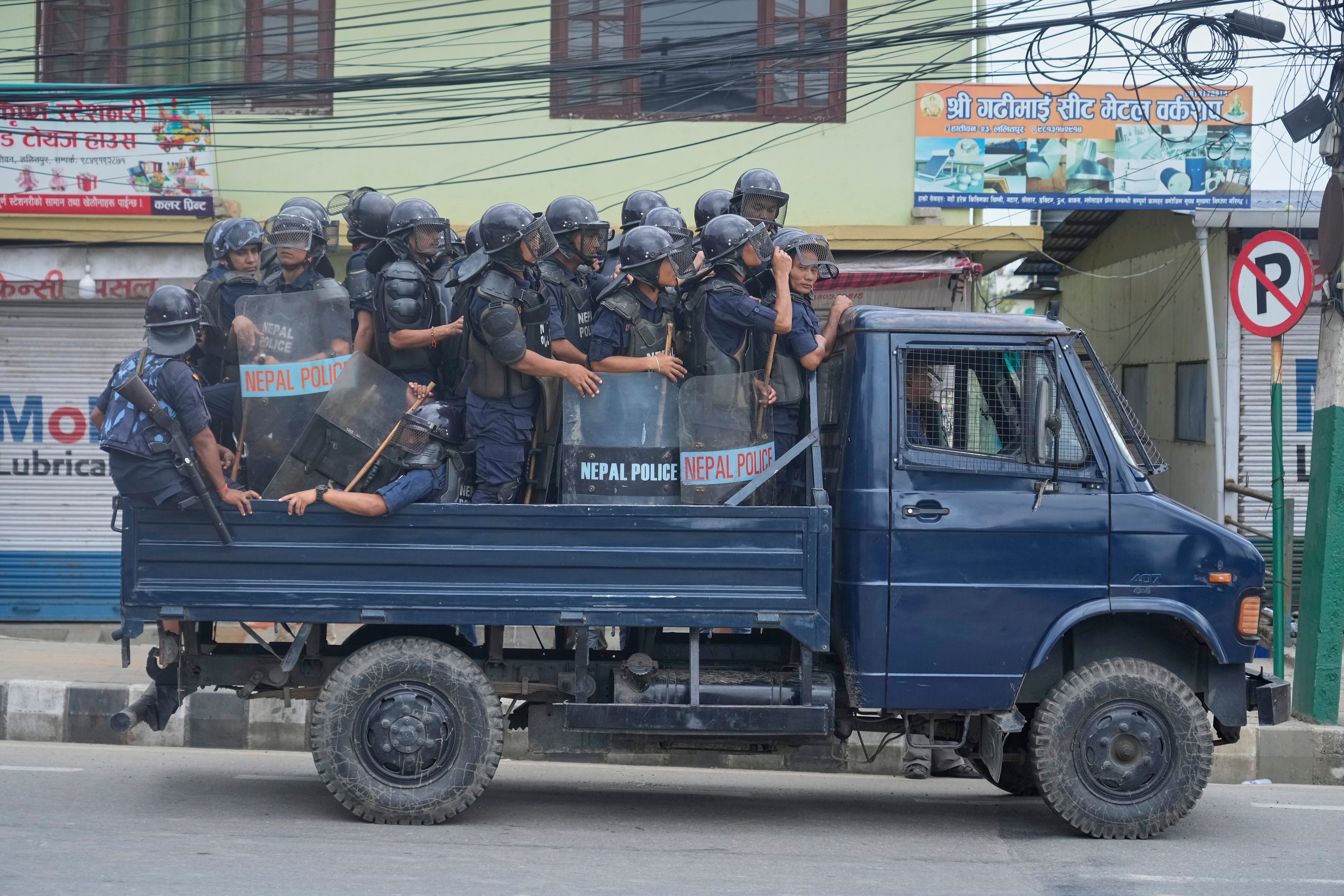
The ban involved roughly two dozen widely used platforms, including Facebook, X (Twitter) and YouTube, which had refused to comply with a new rule requiring registration and direct government oversight.
Before Mr Oli’s resignation, the government said it wanted to pass a bill to ensure social media platforms were “properly managed, responsible and accountable”, but rights groups condemned it as an attempt to censor dissent and silence critics.
Even after the social media ban was lifted, demonstrators said they would continue to protest. “We are still standing here for our future … We want this country corruption-free so that everyone can easily access education, hospitals, medical [facilities] … and for a bright future,” protester Robin Sreshtha told Reuters TV.
The homes of several other prominent politicians were also torched, including the residences of president Ram Chandra Poudel; home minister Ramesh Lekhak; Bahadur Deuba, leader of the ruling Nepali Congress party; and Pushpa Kamal Dahal, leader of the Communist Party of Nepal (Maoist Centre).
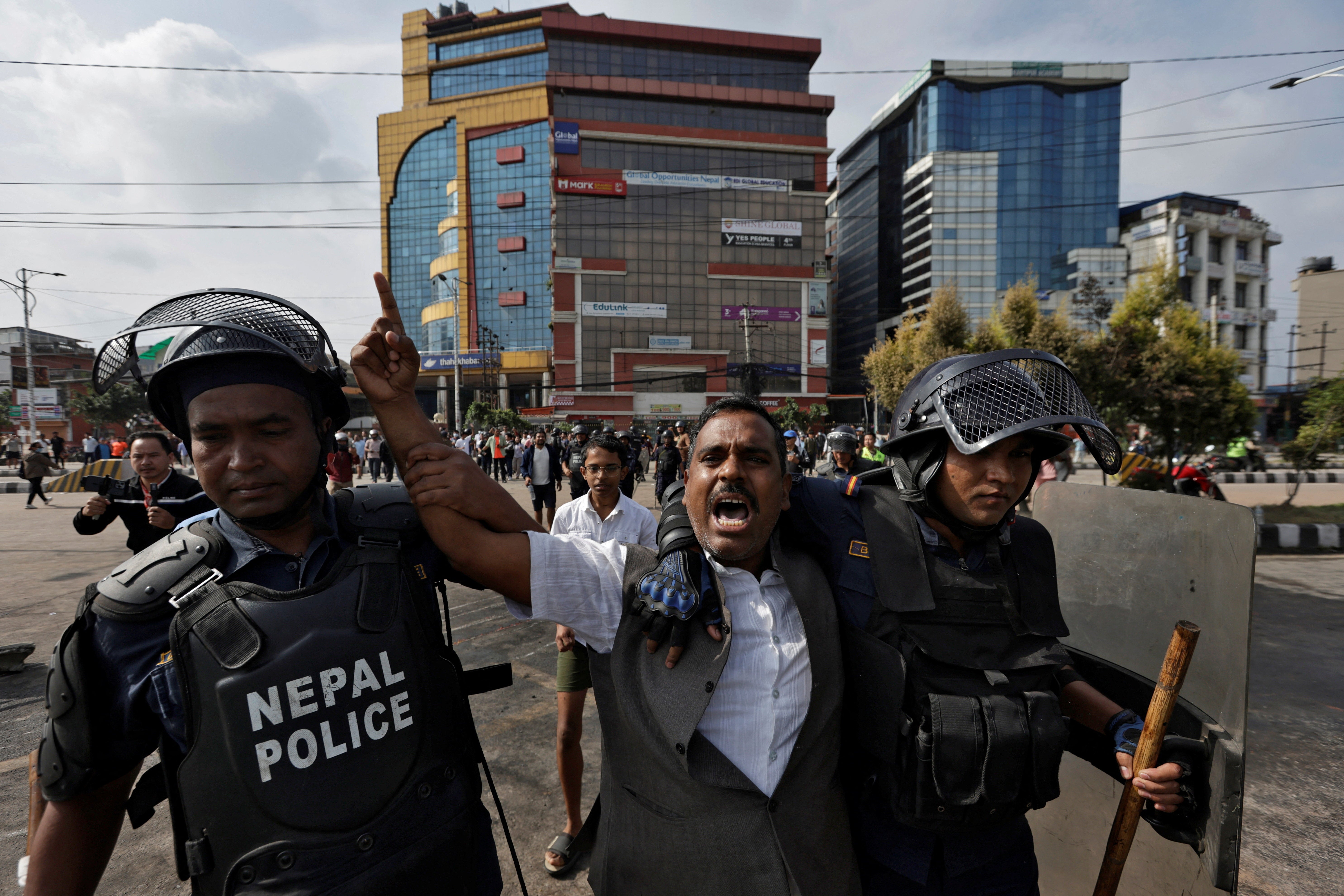
A private school owned by Mr Deuba’s wife Arzu Deuba Rana, who is the current foreign minister, was also set on fire.
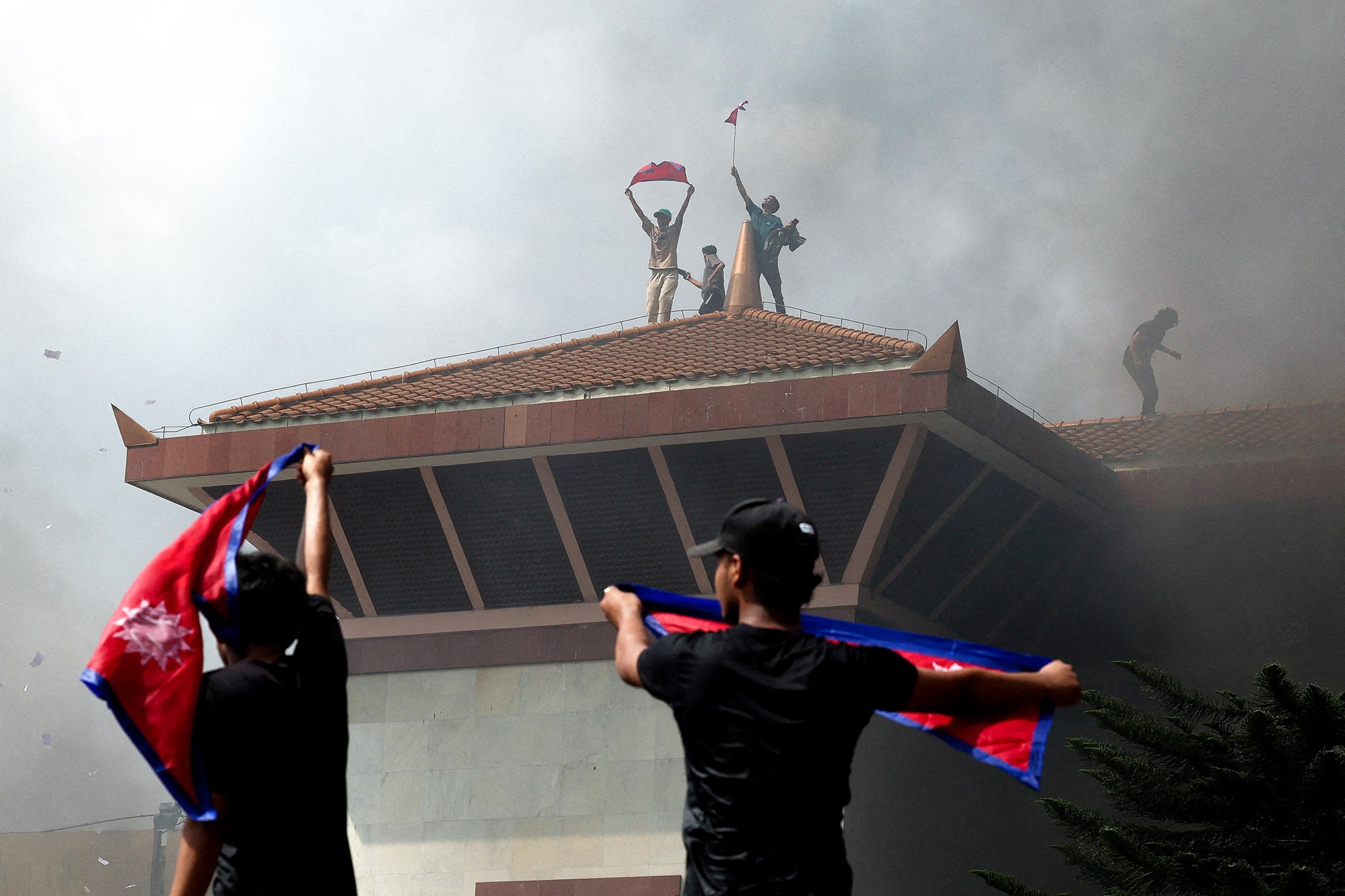
The rally protests turned violent when crowds surrounded the parliament building on Monday and police opened fire. Witnesses reported that young demonstrators were shot at close range.
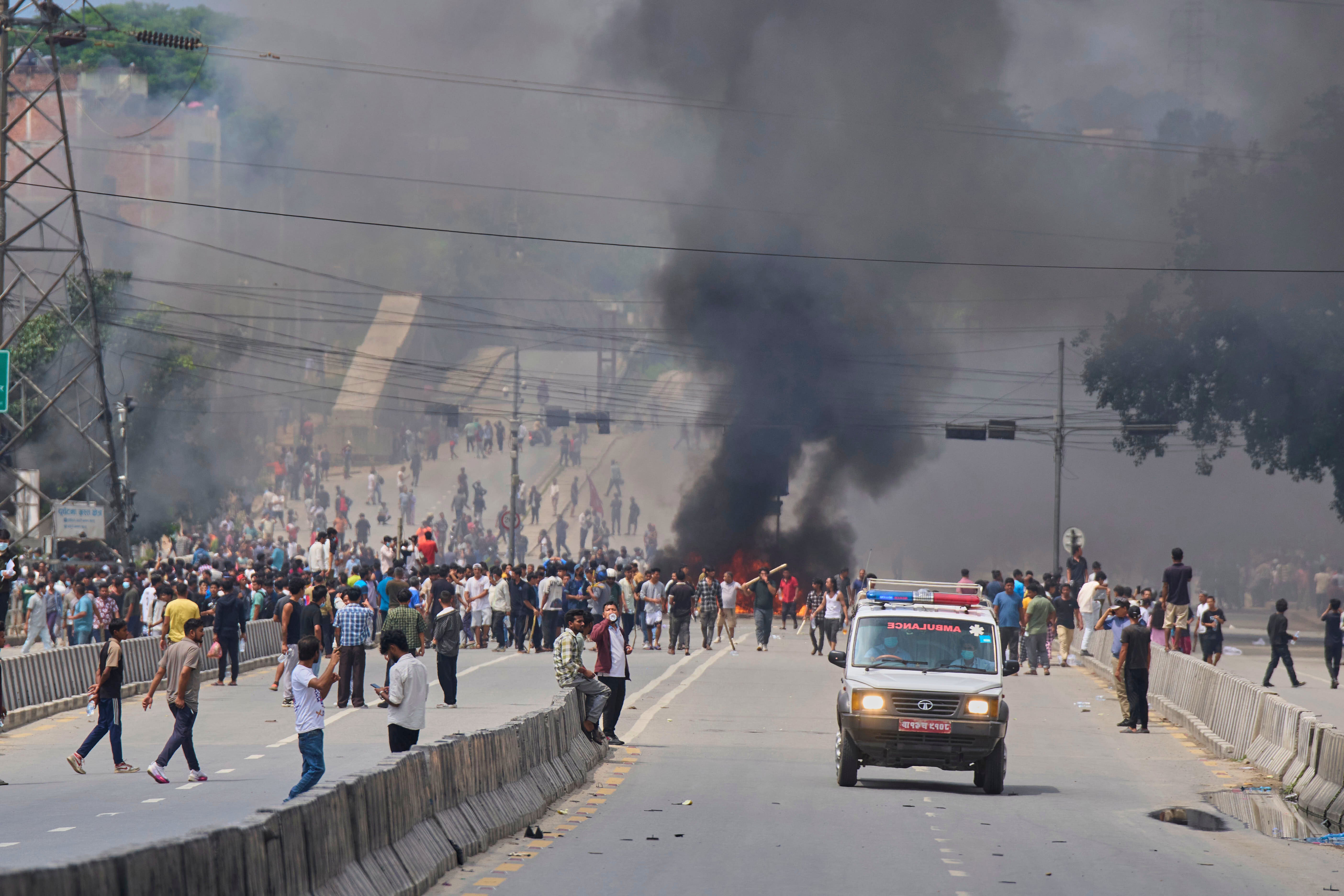
At least seven of the dead and dozens of the wounded were taken to Kathmandu’s national trauma centre. “Many of them are in serious condition and appear to have been shot in the head and chest,” said Dr Badri Risa. Families crowded the hospital for news of missing relatives as volunteers queued to donate blood.

